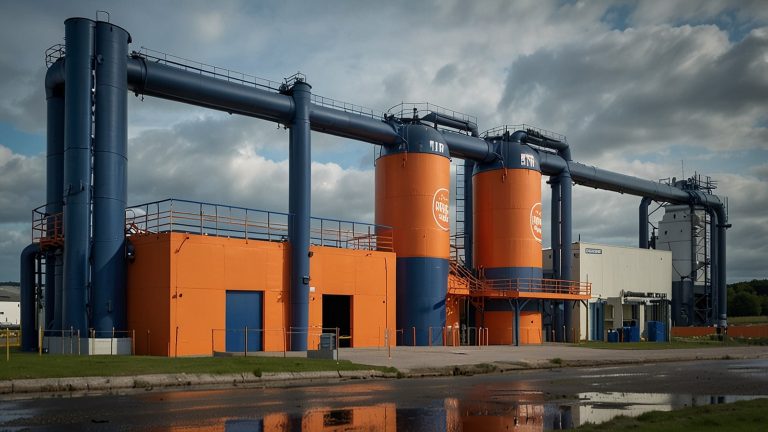The stock of AG Barr PLC, the legendary producer of Irn Bru and Rubicon, increased 4 percent in opening trading on Thursday due to the strong half-year performance that highlighted strong consumer demand of its soft drinks portfolio in the face of declining inflation.
The FTSE 250-listed company has noted a 25 per cent increase in earnings per share, and this is more than what is expected in the market, which is an indicator that the non-alcoholic beverages industry will rebound strongly.
Cumbernauld-based firm has reported earnings per share of 24.9 pence for the six months ended July 27, 2025, which is a significant increase compared to the 19.86 pence it posted a year ago.
The revenue growth of 5 per cent (PS248.5 million) was supported by a volume increase of 7 per cent in its strongest soft drinks segments, and the adjusted operating profit increased 22 per cent (PS36.2 million). These values are easily above analyst expectations of 22.5 pence of EPS and PS245 million of sales, leading to an optimistic outlook on the entire year.
The stock of AG Barr rose to 512 pence per share, equivalent to some PS30 million on its PS550 million market capitalisation and beating the FTSE 250 index, which improved by a more insignificant 0.4 per cent.
The recovery can be attributed to a fresh confidence of investors in consumer goods since UK households are looking at low-cost luxuries in an economy that is starting to stabilise.
Six Months of Victories Fire High Hopes in the Drink Industry
The performance of AG Barr highlights a dynamic performance in the first half of the year, which was characterised by strategic pricing and product innovation. The company’s flagship Irn-Bru brand, Scotland’s favourite drink and the country’s Other National Drink, recorded a 6 per cent sales boost, supported by limited-edition flavours and focused marketing programs associated with major sporting events.
Its multicultural mango and guava brand, Rubicon, recorded growth rates of 12% which is in the double digits, due to the increased demand for exotic, low-sugar products in the younger age groups.
In the earnings release, the CEO, Stuart Lorimer, said: Our brands are still appealing to consumers who need to refresh and have value. We have managed supplier price fluctuations with effective supply chain management to bring growth and expansion of the margin, but we have invested in other growth projects.
This was aided by a 3 per cent price change in the portfolio that was compensated by promotional efforts that helped the company to hold on to market share of 4.8 per cent in the 3.5 billion UK soft drinks sector.
The energy drinks segment, comprising Boost, added a revenue growth of 9 per cent, exploiting the 5 per cent yearly growth in the PS1.2 billion market. Sustainability (including 95 per cent of products packaged in recyclable packaging) has also earned AG Barr some popularity, which is in line with the trends among consumers, with 68 per cent of customers currently considering sustainable products a priority.
Market Rally Echoes Sector Strength
It relates to the wider context of a stock market boom in defensive consumer products, which the 3 per cent monthly growth of shares in the FTSE 250 shows is an indication of strength in the face of world trade panic.
The traders are applauding the performance of AG Barr, and one of the Edinburgh-based analysts commented, This is not a sugar high but the evidence of sustained brand loyalty in the age of health consciousness. The stock is currently up 15% year to date, recovering after early dips in 2025 caused by transient sugar tax panic.
AG Barr, with a forward earnings of 14 times, has a very attractive 2.8% dividend yield, and the interim payout has been increased by 10 per cent to 6.13 pence per share. It is a progressive policy with 4 times earnings coverage that will be of interest to income investors who are pursuing stability in the face of the stable 4.75 base rate of the Bank of England.
These are the precursors to the company’s annual guidance, which is now skewed towards the top end of PS80 million to PS85 million of adjusted operating profit, which means that it is 8 per cent growth. This hope is pegged on long-term demand in summer and holiday seasons, and new listings of key retail chains such as Asda and Morrisons will bring in PS10 million of incremental sales.
Innovation and Expansion Strategies Take Centre Stage
AG Barr is reinventing its growth vectors outside the heartland. By investing PS20 million in production capacity at its Alloa plant, it will begin to realise increases in output by 15 per cent by mid-2026, making its products available in export markets in Europe and the Middle East, where Rubicon has an ethnic appeal.
The firm has also announced a collaboration with a top functional beverage start-up to bring on board vitamin-enriched waters in order to tap into the PS800 million wellness drinks market.
Lorimer stressed digitalisation, and the e-commerce sales increased by 25 per cent through websites such as Amazon and Ocado. He said, “We are transforming from a regional giant to a national innovator. This incorporates AI-assisted inventory predicting, which reduced wastage by 12 per cent, enabling gross margins to shoot up to 38 per cent- 200 basis points higher than previous years.
It still has an acquisitive intent, with the 2023 minority stake acquisition of a craft soda maker. AG Barr has net cash of PS50 million and is pursuing bolt-on acquisitions of less than PS100 million to expand its operations to premium and non-carbonated segments and thus, the company expects its EPS to increase by 10 per cent every year to 2027.
Trends and Threats in an Emerging Industry
No smooth ride lies ahead. A 4 per cent increase in raw material prices of aluminium and flavourings, which are already up compared to quarters to quarters, is a risk to the margins, and advertising to kids may be scrutinised by the authorities.
The pressure of the health lobby to make even more reductions to the sugar compounds complicates the situation, but AG Barr has made great strides in its reformulation program, cutting calories by 20 per cent across the lines, which puts it ahead of the pack.
Most analysts are optimistic, with an average price goal of 620 pence, indicating a 21 per cent increase. A Numis research note pointed out that AG Barr has a combination of heritage and agility that makes it one of the best in a rather consolidating market. Nonetheless, excessive exposure of the UK (92% of sales) is urging the geographic diversification to reduce the sterling volatility.
The soft drinks sector is expanding at 3.5 per cent to PS4 billion in the UK, which has been driven by the trend of premiumization. The same happens with competitors such as Britvic and Nichols, but the 18% ROCE of AG Barr gives them the advantage, which highlights operational excellence.
The Ripple Effects in the Consumer Landscape in the UK
AG Barr has a good performance, giving a boost to the consumer defensive enclave within the FTSE 250, where shares have been trailing the index by 2 per cent this year. It is an indication of the fact that even the luxuries of life, such as a fizzy treat, survive the economic crunches, as household expenditure on beverages remains stable at PS120 per person.
This 4 per cent yield and growth trend make AG Barr an essential part of the portfolio to investors, particularly as the company nears the results in the full year on March 26, 2026. In this ever-changing world of passing fads, this Scottish veteran comes to show that a few bubbles never burst–a fizzing speculation about the insatiable thirst of Britain.











 Bitcoin
Bitcoin  Ethereum
Ethereum  Tether
Tether  XRP
XRP  USDC
USDC  TRON
TRON  Lido Staked Ether
Lido Staked Ether  Cardano
Cardano  Avalanche
Avalanche  Toncoin
Toncoin  Solana
Solana